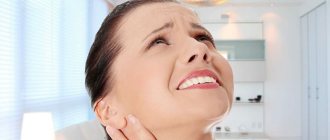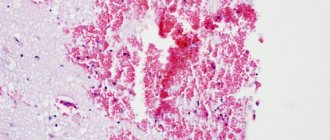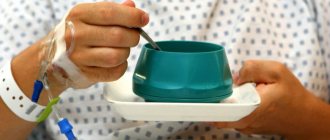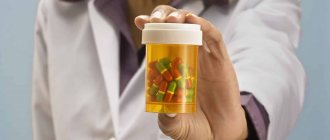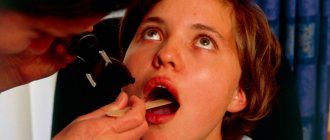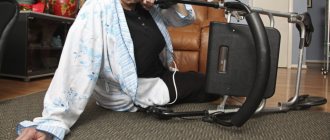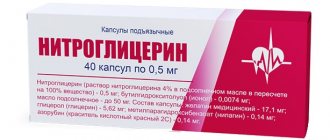Therefore, with long-term use of these medications and after completion of the course of treatment, the patient must adhere to certain dietary rules in order to remove them from his body. Recovery after taking antibiotics, as well as their effectiveness during illness, largely depends on our daily menu. There are special recommendations and diets that help rapid recovery and effective elimination of these drugs from our body.
What is an antibiotic
Antibacterial drugs are complex chemical compounds that act on the microorganism cell, destroying it. Antibiotics do not treat viral diseases, because viruses do not have cells and cannot be affected. Remember that antibacterial therapy for a viral infection is adequate only when a bacterium is added to the flu or ARVI.
Taking antibiotics, for example, for ARVI in the hope of preventing bacterial complications is absolutely wrong . If an antibiotic was prescribed preventively, and then a bacterial infection still occurs, then these will be other types of microorganisms and to combat them you will need to take another drug.
However, antibiotic prophylaxis is prescribed when there is concern about the development of infectious complications after various operations. And, for example, they take antibiotics after biting a tick to prevent borreliosis.
The importance of drinking regime
So, let's start with observing the drinking regime. Do not forget that a large amount of liquid (up to 4 liters) absorbed during the day helps to flush the body well during illness. Many people know about the importance of warm, plentiful drinks at this time, but what
Few people know about taking antibiotics.
Which drinks should you pay special attention to? Doctors recommend giving preference to fruit juices, tea or coffee with lemon. These foods contain large amounts of vitamin C, which helps the body fight infection. Almost all freshly squeezed fruit juices are rich in ascorbic acid, but especially apple, orange, strawberry and peach.
Carbonated and alcoholic drinks are strictly prohibited. Drinking alcohol in combination with taking antibiotics can lead to various complications, including death.
Contraindications and side effects
Antibacterial drugs are divided into groups; they differ in their effects and side effects. Based on these factors, the doctor prescribes a specific medicine to the patient; the reaction to the drug also depends on the patient’s body. The choice of treatment is influenced by chronic diseases, and if they exist, or there have been allergic reactions to the drug, you must inform your doctor about this. Intolerance to the drug can cause a reaction up to anaphylactic shock, when the pressure drops sharply, a semi-fainting state occurs and the person requires urgent resuscitation .
Diarrhea is a very common reaction to taking antibiotics. Usually it is not treated additionally, but if this symptom persists several days after stopping the medication, it is better to consult a doctor.
A fairly rare, but very serious complication of taking antibacterial drugs is a disorder of hematopoiesis. It can be triggered by the antibiotic Levomycetin. The product was no longer produced in tablet form in a number of countries, to which Russia is not one. In pharmacies, "Levomycetin" is only available by prescription, but even if it was prescribed by a doctor, before you start taking the medicine, see another doctor and look for an alternative medicine.
There are also age-related contraindications: children are prohibited from giving many antibiotics. Thus, drugs from the tetracycline series are contraindicated up to nine years of age, fluoroquinolones - up to 15 years. If a child is prescribed an antibiotic, the dose should take into account the weight and age of the young patient.
A separate case is taking antibiotics during pregnancy. Antibacterial therapy is prescribed only if such treatment really cannot be avoided. Medicines are especially dangerous in the first trimester, but tetracyclines should not be taken throughout the entire period of gestation (they can lead to disruption of the formation of bones and teeth in the fetus), aminoglycosides, which can cause oto- and nephrotoxicity, as well as chloramphenicol, sulfonamides are also prohibited and nitrofurans.
Nutrition during treatment with antibacterial drugs
For some diseases, it is ideal when it is possible to undergo bacterial culture tests to determine sensitivity to antibiotics. When laboratory data is available, the selection of an antibiotic is simplified and in this case the treatment is obtained with sniper precision. The disadvantage of this test is that the wait for the result takes from 2 to 7 days.
If you encounter this problem, proper hydration of the body and compensation of lost electrolytes must be considered. Drink mineral water and 100% natural juices.
The diet should consist of easily digestible foods such as bananas, baked apples, oatmeal, skim milk dairy products, pudding, eggs, soups and foods containing probiotics:
- yogurt,
- kefir,
- spoiled milk,
- cheeses with added probiotic culture,
- some soy products
- and kombucha.
Nothing takes them
Photo: pixnio.com
Resistance of microorganisms to antibiotics is now causing great problems in the treatment of many diseases. Microbes mutate, and forms of bacteria appear that existing drugs have no effect on. This situation has arisen due to the uncontrolled and incorrect use of antibacterial drugs. If you choose the wrong medication, dose, and do not comply with the terms of treatment, the microbes will not die, but will change their structure, and next time the same antibiotic will no longer help the patient.
Cleansing the body of harmful toxins
Antibiotics accumulated in the body and not removed from it are converted into poisonous toxins. Nutrition while taking antibiotics and after them involves increased consumption of cranberries, plums, blueberries, hazelnuts, almonds, walnuts, beans, parsley, and cocoa. These products contain antioxidants that help quickly cleanse the body of harmful substances. Antioxidants also include food additives such as pectin, ascorbic and citric acid.
Experts also advise drinking urological and chest herbal infusions. They also help remove toxins from our body. Nettle tea is considered a universal cleanser for the body. To prepare it you will need 2 tbsp. l. chopped nettle per 2 liters of boiling water. This drink should be drunk throughout the day. After just 2 weeks, the body will completely get rid of antibiotics.
How to take antibiotics
In order for the drugs to work and not cause harm, all patients must adhere to certain rules. Do not violate the dosage, time and frequency of administration. This is important so that the concentration of the drug in the blood does not decrease and the microbes do not begin to multiply again. Take medications with water only
drink more fluids during treatment. Also listen to your body. As a rule, on the third day of taking the pills they begin to have a noticeable effect. This does not mean that you have recovered, but there should be . If nothing changes or gets worse, consult a doctor - you need to change the drug. Do not stop taking medications ahead of time, even if your health has improved significantly, but also do not prolong the course of treatment.
https://youtu.be/5Oo6UnLmtnQ
Diet after taking antibiotics
To restore the body after taking the above medications, it is necessary to adhere to a special technique for proper nutrition for some time. This diet, like the antibiotic diet, recommends avoiding the consumption of fried and smoked foods, as well as fatty foods. Well, alcohol is completely unacceptable in such cases. During the recovery period, the human body also requires meals rich in proteins. And to maintain liver function, the patient must consume honey.
After a long illness, our immune system is very weakened. To strengthen it, natural medicines such as ginseng, lemongrass, eleutherococcus, and echinacea are recommended. The use of various herbal decoctions and green tea also helps improve immunity. Foods rich in vitamin C, in particular grapefruits, help the human body to successfully restore itself, and taking homeopathic medicines significantly increases its resistance to the effects of pathogenic microbes and viruses.
Also, visiting a bathhouse or sauna has a good effect on the recovery process. In these cases, it must be remembered that these procedures should be applied at normal body temperature.
Alcohol and antibiotics
Photo: rawpixel.com/pexels.com
In order to remove antibiotics from the body, enzymes work that break down complex molecules into simple ones and remove all that is unnecessary. If you drink alcohol during therapy, the body receives a double toxic effect. The reaction in this case can be different - it depends on the group of medication and the dose of alcohol: from an allergic rash to anaphylactic shock, so it is better not to risk it.
Are there any benefits to antibiotics?
Despite the fact that taking antibiotics negatively affects the functioning of certain organs and systems of the body, this class of drugs in most cases is beneficial. It destroys harmful bacteria and prevents their reproduction. The indispensability of antibacterial drugs is due to the fact that other medications may not provide the necessary therapeutic effect in the treatment of bacterial infections. Therefore, the benefits and harms of antibiotics for the human body are determined in each case individually.
Indications for use
Diseases that benefit from antibiotics include:
- Pathologies of the nasopharynx of bacterial origin.
- Infectious skin diseases.
- Bronchitis, pneumonia and other respiratory diseases.
- Bacterial infections of the genitourinary system.
- Intestinal and gastric pathologies caused by pathogenic bacteria.
- Prevention of infections in injuries, for the treatment of purulent wounds.
The properties of antibiotics are such that their use is advisable for the treatment of pathologies caused by pathogenic microflora.
Authorized Products
The basis of the diet for antibiotic-associated dysbiosis is:
- Soups based on low-fat fish/meat broth with the addition of cereals, pureed meat, meatballs and a small amount of vegetables.
- Dried/day-old white bread or crackers.
- Dietary varieties of red meat (beef, veal), chicken, boiled rabbit.
- Porridge made from oatmeal and buckwheat and white rice with the addition of butter.
- Fish of “white” low-fat varieties, steamed or boiled.
- Fermented milk drinks and products (acidophilus milk, koumiss, kefir, fermented baked milk, plain yogurt, cottage cheese).
- Vegetables/fruits (artichoke, carrots, Jerusalem artichoke, zucchini, cabbage, pumpkin, fresh unsweetened fruits, banana, raw apples in pureed form or in the form of applesauce).
- Products/dishes that have an astringent effect: jelly from sloe berries, blueberries, pears, quince, dogwood, rowan, persimmon, bird cherry and fruit drinks made from them.
- Herbal teas, rosehip infusion, infusion of dried dogwood, blueberries, bird cherry, strong green/black tea, non-canned fruit/vegetable juices, still mineral water.
Benefits of probiotics
Probiotic preparations have a beneficial effect not only on the digestive organs - the entire body begins to function more harmoniously:
- the harmful effects of antibiotics on the walls of the stomach are reduced;
- enzymes, hormones and vitamins necessary for the normal functioning of the human body are produced;
- the negative impact of toxins is minimized;
- water-salt metabolism in the intestines is restored;
- the body's defenses are stimulated, its resistance to disease increases;
- the acidity level of the stomach and the entire digestive system is normalized, in which pathogenic bacteria die faster and beneficial bacteria multiply better;
- intestinal microbiocenosis is restored;
- the digestion process is stimulated;
- intestinal motility improves.
All this clearly proves that drinking probiotics to prevent antibiotic-associated diarrhea is simply necessary. Otherwise, the patient faces diarrhea or constipation, bloating, nausea and pain in the abdominal area.
Important! Microbiocenosis can recover on its own after antibiotic therapy is discontinued. However, this process is not fast and depends on the person’s immunity. Therefore, you should not neglect the advice of doctors and save on your health. It is better to take a course of probiotics so that after the main infectious disease you do not also have to treat dysbiosis.
Operating principle
Depending on the active component, antibiotics are divided into two large groups.
- Bacteriostatics block the reproductive function of harmful bacteria, preventing the disease from spreading. Existing pathogenic cells are destroyed by the human immune system.
- Bactericidal antibiotics destroy the cause of the disease.
It is important to understand that each drug is effective only for a certain list of microorganisms, therefore treatment with such drugs is not prescribed without preliminary diagnosis.
Inflammation of the gut and probiotics
Antimicrobial drugs are also prescribed for various diseases of the digestive tract. Antibiotics are indispensable for intestinal inflammation caused by the proliferation of pathogenic microflora. The symptoms and treatment of the disease are similar to antibiotic-associated diarrhea.
Treatment of colon diverticulosis in adults also involves the prescription of broad-spectrum antibiotics. Often, with intestinal diverticulosis in the initial stages, the patient does not have any pain, and diverticula (pouch-like protrusions in the wall of the colon) can be discovered completely by accident. The diagnosis itself is not dangerous to the patient’s health. However, over time, the disease leads to the development of inflammatory processes characteristic of this pathology.
In both cases, complex therapy includes the administration of probiotics to normalize and support the intestinal microflora. But what is the best medicine to take, the doctor must determine, since self-medication is fraught with adverse consequences.
Diet for Helicobacter pylori infection
A diet for Helicobacter pylori infection involves the exclusion of foods that irritate the gastric mucosa by friction.
First, let's figure it out - what is this Helicobacter pylori infection? So: Helicobacter pylori is just a bacterium. But it is usually found in people suffering from stomach diseases. And in diseases of the duodenum, this bacterium is often the “culprit”. A microbe entering the stomach causes inflammation of its delicate mucous membrane, and becomes the source of stomach ulcers, gastritis (both acute and chronic), duodenal ulcers, and sometimes even cancer. And what unpleasant symptoms do patients with Helicobacter pylori infection have - headaches, which often torment patients with this diagnosis, and bloating, a feeling of heaviness in the stomach, a hard, stone-like stomach, sometimes it hurts even to bend over. Often Helicobacter pylori infection is accompanied by either constipation or diarrhea, belching, and bad breath that is not caused by caries. Many people experience allergic reactions when their stomach is inflamed by bacteria. It’s not very pleasant, the patient is simply suffering. Doctors insist that treatment of Helicobacter pylori infection should be carried out only under the supervision of a doctor and only with medication. But they do not mind, and even approve, of combining the effects of antibiotics and following a diet that helps the gastric mucosa to recover. There are several recommendations by following which the patient can recover faster and experience fewer stomach problems during treatment.
Diet and nutrition are the key to success in the treatment of Helicobacter pylori infection. Doctors recommend strictly following the diet for at least two weeks. The diet for Helicobacter pylori infection is as follows - often, in small portions, after eating, the patient should not experience a feeling of fullness and heaviness in the stomach. It is recommended to eat food every three hours. Food should be warm, just warm, not hot and not cold. The consistency of food is preferably pureed - pureed vegetables, thick soups.
Rules for taking probiotic drugs
The effectiveness of taking probiotics directly depends on the quality of the drug, compliance with the rules of its storage and administration. Therefore, every person should know what to do and how to take “live” medicines correctly so that the benefits from them are tangible.
https://youtu.be/Ojpdh—dQn4
The rules for taking probiotics are simple and easy to follow even for the most undisciplined patient:
- You need to take exactly the drug prescribed by the doctor. Only a doctor is able to correctly assess the clinical picture and health status of the patient and prescribe the “right” medicine, taking into account the characteristics of its effect on the body.
- Take the probiotic exactly according to the included instructions. It is important to follow the recommendations regarding dosage and time of administration (before, after or during meals).
- Do not take probiotics with hot water. The maximum permissible temperature of the drink is 45°C - at a higher temperature, beneficial microorganisms will die.
- Do not stop taking probiotics after completing the course of antimicrobial therapy. Doctors recommend continuing to take medications for some time after taking antibiotics. This is necessary in order to completely restore the functioning of the stomach and intestines. The period of time during which it is necessary to take “live” medications is determined by the attending physician.
- Quit alcohol and smoking. During treatment, you have to think about health, and not about the dubious pleasure of drinking alcohol and cigarettes.
Important! For any disease, you should not take antibiotics and probiotics at the same time of day. These drugs should be taken with a minimum difference of 2 hours. Otherwise, strains of beneficial bacteria will die under the influence of antimicrobial drugs.
Proper nutrition
The first product that is worthy of attention when taking antibiotics is fish. The main positive effect of this product is the abundance of easily digestible proteins, which will be useful for both adults and children. In addition, fish is considered the richest source of polyunsaturated fatty acids. Good food options when taking antibiotics include:
- Ear.
- Steamed fish cutlets.
- Baked fish with vegetables.
Another source of protein for patients forced to take antibiotics will be meat
Please note that it is better to temporarily exclude fatty foods from the diet until complete recovery. The first choice is lean veal.
Cheaper options include turkey or chicken. An approximate set of dishes for a diet while taking antibiotics will include:
- Steamed cutlets made from lean meat.
- Baked meat.
- Boiled meat.
You also need to eat fruit. Fruits are a natural source of vitamins necessary to restore the body and improve the condition of the immune system. In the summer there is no problem with this, because all kinds of berries, fruits, and other plant foods can be found anywhere. Blueberries, cranberries, lingonberries, and raspberries will be especially useful. In the cold season, you can use citrus fruits, bananas or apples.
In addition to vitamins, the body also needs to be saturated with other useful substances. First of all, we are talking about fiber. Its main source can be wholemeal bread. A large concentration of this substance is also found in all kinds of grain porridges, for example, wheat or oatmeal. If your child doesn't like cereal, you can add nuts, dried fruit, or some spices like cinnamon or vanilla. In addition, experts recommend steaming vegetables. This way they retain the maximum amount of substances beneficial to the body.
If we talk about plant foods, we must not forget about greens. It is especially relevant during the period of taking antibiotics. Lettuce, cabbage, and kohlrabi will be an excellent source of vitamins for the body, which faces a long and difficult recovery. During the absence of beneficial microflora, the function of the gastrointestinal tract is disrupted. Problems with metabolism may also arise. Greenery will help you avoid these troubles.
As for hot dishes, the best choice would be all kinds of broths and soups. Light chicken broth will be absorbed by the body quickly enough. In addition, it has excellent nutritional value, which will improve recovery processes. If you need to feed a small child who does not like soups, you can cut vegetables into some shapes. The benefits of chicken soups with vegetables are a large amount of fiber and other substances beneficial to the body. During the cold season, many vegetables are unavailable. In this case, you can replace them with frozen ones.
To accelerate the development of beneficial microflora, you need to consume sauerkraut, which has a large amount of vitamin C. Pumpkin seeds, which contain a large amount of zinc, which is a natural antibiotic, are also a good option.
https://youtu.be/7iOEb9vfgbI
Recent comments
Scottdit on Diet for type 2 diabetes with obesity
Copyright 2019 Diet Expert. All rights reserved.
When copying materials, an active link to the source is required. 12+
Classification
Each group has individual characteristics.
Parasitologist Rykov S.V.: statistics show that more than 78% of the country's population is infected with PARASITES.
Often, prolonged diseases of the nasopharynx are caused by helminths, which can move freely throughout the body. Many people find out about the presence of parasites in the nose or throat by chance when they consult a doctor.
Read the interview with the head of parasitology —>
Cephalosporins
Cephalosporins are antibiotics, each drug of which has a broad spectrum of action. They are usually prescribed to be taken for the treatment of pneumonia and other infectious diseases in the surgical, urological and gynecological areas.
Some medications in this group should be taken with meals (for example, Cefuroxime Axetil), Cephalexin - 1 hour before meals, and others should be used only within a time interval (for example, Cefixime, Cefaclor, Ceftibuten).
They have the following features:
- approved for use by women during pregnancy and children;
- age characteristics and dosage for children are indicated in the instructions for each individual drug;
- provoke an allergic reaction less often than Penicillins.
Penicillins
Penicillins are antibiotics characterized by a broad spectrum of action and have a low toxic effect. Phenoxymethylpenicillin should be taken 1 hour before meals, Oxacillin, Clavulanate and Ampicillin should be taken during meals, and Amoxicillin can be taken regardless of meals, but it is better immediately after or before meals. They are necessary in treatment:
- exacerbations of chronic tonsillitis;
- scarlet fever;
- infectious skin lesions;
- sinusitis;
- acute cystitis;
- tonsillitis;
- acute otitis media and other diseases.
- More often than other groups of antibiotics they provoke allergies;
- allowed for women during pregnancy and children from an early age;
- Amoxicillin-based medications reduce the activity of birth control pills.
Macrolides
Macrolides are most often used in the form of suspensions and tablets. These antibiotics are characterized by a slow action compared to other groups, since they do not attack bacteria, but suppress their reproduction. Very rarely provoke the development of an allergic reaction.
Midecamycin, Azithromycin, Erythromycin, Roxithromycin, Midecamycin acetate must be taken 1 hour before meals, and Clarithromycin, Spiramycin, Josamycin are allowed to be taken regardless of meals, observing the time interval.
Used for therapy:
- acute otitis media;
- tonsillitis;
- whooping cough;
- sinusitis;
- exacerbation of chronic bronchitis and tonsillitis.
- after one course of treatment, it is necessary to take a break of more than 3 months, since pathogenic particles quickly develop resistance to medications of this group;
- some antibiotics interact with other medications you take, reducing their activity;
- sometimes absorbed more slowly during interaction with food.

